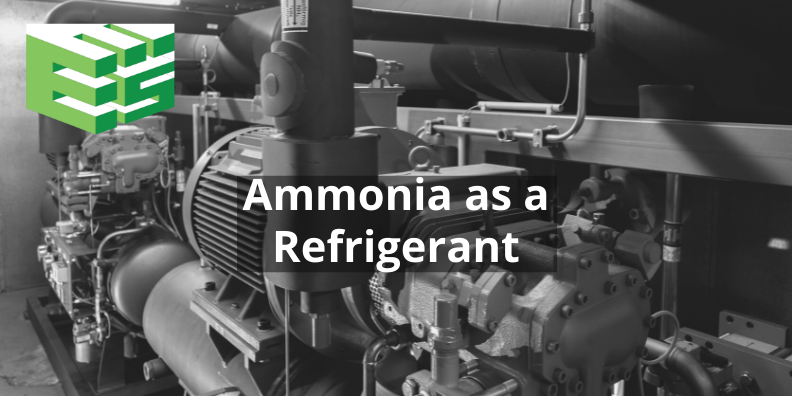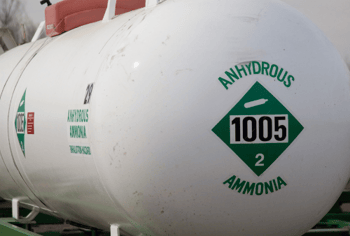
With today’s focus on protecting the environment, building owners should consider replacing traditional synthetic refrigerants with ammonia-based systems to save on utilities and protect the planet.
A naturally-abundant compound, NH3, ammonia is a highly-effective and low-cost refrigerant. Migrating building chillers from synthetic refrigerants such as hydrofluorocarbons (HFCs) to ammonia lowers monthly energy consumption while eliminating climate effects. As ammonia is present in nature, it does not have to be manufactured like HFCs, making it the best choice for industrial refrigeration.
“Ammonia is the preferred solution,” said EES Founder and CEO Pat Miller. “EES has been working in the industry for more than 40 years, and has vast experience with ammonia chillers, including a project at a global pharmaceutical manufacturing plant in Puerto Rico. We are experts in designing effective control systems to successfully mitigate ammonia’s inherent risks.”
The American Society of Heating, Refrigerating and Air-Conditioning Engineers (ASHRAE) supports the use of Ammonia. In ASHRAE’s Position Document on Ammonia as a Refrigerant it states, “[Ammonia] has remained the main refrigerant used in industrial refrigeration systems because of its superior thermodynamic properties and low cost…when released to the atmosphere, [it] does not contribute to ozone depletion and global warming. Ammonia is generally considered to be benign to the environment. ASHRAE encourages the continued use of ammonia for - industrial and commercial refrigeration, food preservation, indirect space conditioning, heat pumps and other applications.”
History
Ammonia is a pungent, colorless gas which is toxic to humans and has been used as a refrigerant since the vapor-compression refrigeration cycle was developed, around 1850. Before the advent of modern control systems, risk management for ammonia was difficult because a leak in the refrigeration system could result in poisoning.
To lower the risk posed by leaked natural refrigerants such as ammonia, synthetic refrigerants were developed and have been manufactured since the 1930s. Unfortunately, synthetic refrigerants are now known to cause global warming and are heavily regulated. Most synthetic refrigerants have a significant ozone depletion potential (ODP) and global warming potential (GWP). In recent decades, older HFCs like R12 and R22 have been phased out, replaced by newer HFC refrigerants which are somewhat less harmful to Earth but still have a significant climate impact. With climate change becoming an ever more important topic in today’s world, companies wishing to lower their climate impact need to consider alternatives to synthetic refrigerants. Ammonia’s ODP and GWP are both zero, making it an excellent and affordable alternative to synthetic refrigerants.
Comparing Refrigerants
With today’s increased focus on lowering ozone depletion and global warming, ammonia is emerging as the refrigerant of choice for many, including pharmaceutical giant Roche Group (see this article, page 22).
In industry association ASHRAE’s 2013 Handbook-Fundamentals, Chapter 29, Table 8, a chart illustrates the comparative performance of a variety of industrial refrigerants, including many synthetic refrigerants and ammonia. The column Net Refrigerating Effect shows that ammonia has between 3.4- and 11-times higher refrigeration capability compared to all other common industrial refrigerants. This means that compared to using synthetic refrigerants, the refrigeration components of an ammonia chiller are a fraction of the size, saving space and lowering the cost of the initial investment.
Two further benefits of using ammonia as a refrigerant are that it is not hazardous to the environment (in fact, it is naturally abundant) and does not have to be manufactured. These, coupled with its low cost and refrigeration capacity, make ammonia the clear choice for new refrigeration systems.
Managing Ammonia’s Risks - Safety
With advances in industrial control systems and peripheral equipment such as sensors, ammonia’s toxicity to humans can be safely mitigated. With closed-loop systems and fully automatic monitoring, the system can be easily operated with readily-available industrial control systems and sensors. Today’s ammonia refrigeration systems are isolated in a sealed, non-human-occupied room to contain any potential gas leaks. Sensors called “sniffers” are used to monitor the air quality in the chiller room.
ASHRAE comments, “The self-alarming property of ammonia is recognized by virtually all engineers, designers, technicians and mechanics that deal with and work on ammonia systems regularly. Thus, small leaks are repaired quickly and not neglected or dismissed as insignificant.”
If an ammonia leak is detected by plant personnel, the gas can be neutralized by throwing a wet cloth over the leak. If no one is present, the control system will engage a simple water sprinkler mechanism to cleanse the air, simply washing the effluent down the drain.
EES Experience
EES has designed, installed, and maintained several ammonia chillers in the pharmaceutical and food and beverage industries. There are obvious cost savings in using ammonia as a refrigerant in new systems, but existing ammonia systems can also benefit from a controls upgrade or recommissioning.
At a global pharmaceutical manufacturing plant, EES installed their proprietary PROCOS chiller optimization system, resulting in minimized energy use and increased operational reliability. At a dairy pasteurizing plant, EES upgraded the controls on an existing ammonia system, saving approximately 15% on the monthly utility charges. EES has also designed and installed ammonia refrigeration controls for new equipment at a large New Jersey food and beverage packing plant.
Paired with modern control and safety systems, ammonia’s low total cost and Earth-friendly profile make it the ideal refrigerant for new chillers. For existing ammonia chillers, a controls upgrade or recommissioning can often produce savings on monthly utility bills.
For more information or to discuss a project, please contact us.

